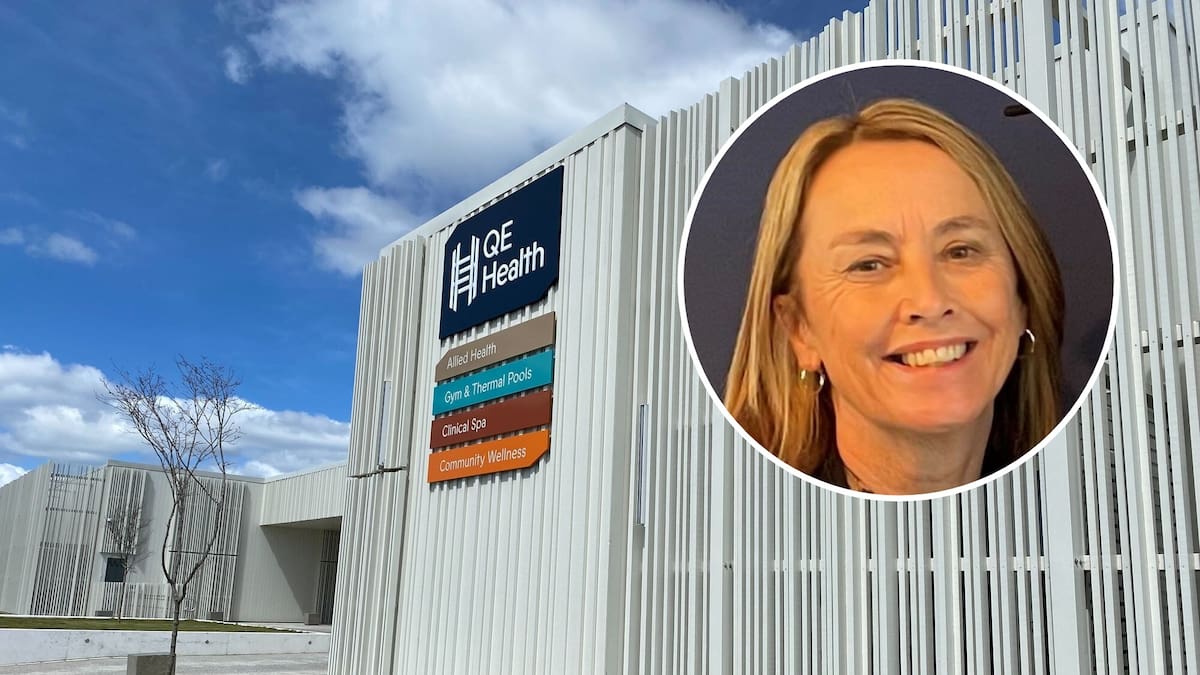This increases the risk of fracturing or breaking a bone, even after a minor fall or bump.
Osteoporosis New Zealand estimates New Zealanders aged over 50 suffer 22,300 fragility fractures every year, accounting for 191,000 hospital bed days.
Laing said her paperwork was sent to a GP after her diagnosis, but said she was not initially offered any treatment.
Then about 18 months ago, Laing was putting a trailer on the back of a car when “something snapped”.
“I thought: ‘Oh my god I’ve paralysed myself’.”
Laing said she was in “absolute agony”.
An X-ray confirmed she had two fractures in her spine.
“That was a bit of a shock because I wasn’t expecting that.”
Another bone density scan revealed her bone density was “pretty bad”.
QE Health in Rotorua offers bone density scans in the Health New Zealand Lakes district. Photo / Megan Wilson
Her GP prescribed her hormone replacement therapy, vitamin D, and annual intravenous infusions for three years.
Regular exercise also helped. Every week, she walked between 20km and 30km, did pilates three times, and yoga once.
“I think I’d probably be in a lot more pain if I didn’t.”
She said she was “constantly trying to make my body stronger” and eating more whole foods.
Laing said her diagnosis made her “more conscious of my weaknesses”.
“I don’t rush in and lift things anymore … because I’m afraid of hurting myself.”
At work in a tyre shop, she would not lift a tyre out of a customer’s car boot.
Laing said if someone had an injury they could not recover from, “it’s probably a good investment to go and have the scan”.
Reducing the risk of osteoporosis
QE Health rheumatology nurse Sara Kelly said osteoporosis was often called a “silent disease”.
“It’s often not until somebody does, say, have a fall and a fracture that that’s picked up.
“There are often no signs or symptoms other than that.”
Kelly said people sometimes thought osteoporosis was an “elderly person’s disease”.
“But it can happen in younger people as well, particularly women … ”
Kelly said it was important people had enough calcium and Vitamin D daily.
“About 20 minutes of sun exposure every day – Vitamin D helps the calcium get absorbed into the bones.”
QE Health rheumatologist Dr Thomas Armingeat. Photo / Megan Wilson
QE Health rheumatologist Dr Thomas Armingeat said osteoporosis was “strongly associated” with low quality of life, dependence, and death.
A neck or femur fracture would “likely” lead to someone becoming wheelchair-bound or bedridden, he said.
Spinal fractures could also trigger a “huge loss” of quality of life, he said.
Armingeat said bones were “always renewing” and staying active was “good for your bones”.
For people with osteoporosis, he suggested stimulation with weight-bearing activity, calcium and potentially medication to build up their bones and skeleton to maintain the strength.
QE Health bone density technician Liz Harding said getting a diagnosis before suffering a fracture could help improve quality of life.
People may improve their level of exercise, nutrition, stop smoking and reduce their alcohol intake, she said.
She encouraged people to “be proactive” about their bone health through having a healthy lifestyle.
Osteoporosis risk factors
Age 65 and older for women, and 75 and older for menEarly menopauseFamily history Some medical conditions i.e. gastrointestinal disorders that may affect the absorption of minerals into your bonesMedications such as steroids including prednisoneAlcoholSmokingInactivityLow body massFrequent fallsPoor nutrition and eating disorders.
It is estimated one in three women and one in five men aged 50 or older will have an osteoporotic fracture.
Source: QE Health
Megan Wilson is a health and general news reporter for the Bay of Plenty Times and the Rotorua Daily Post. She has been a journalist since 2021.

